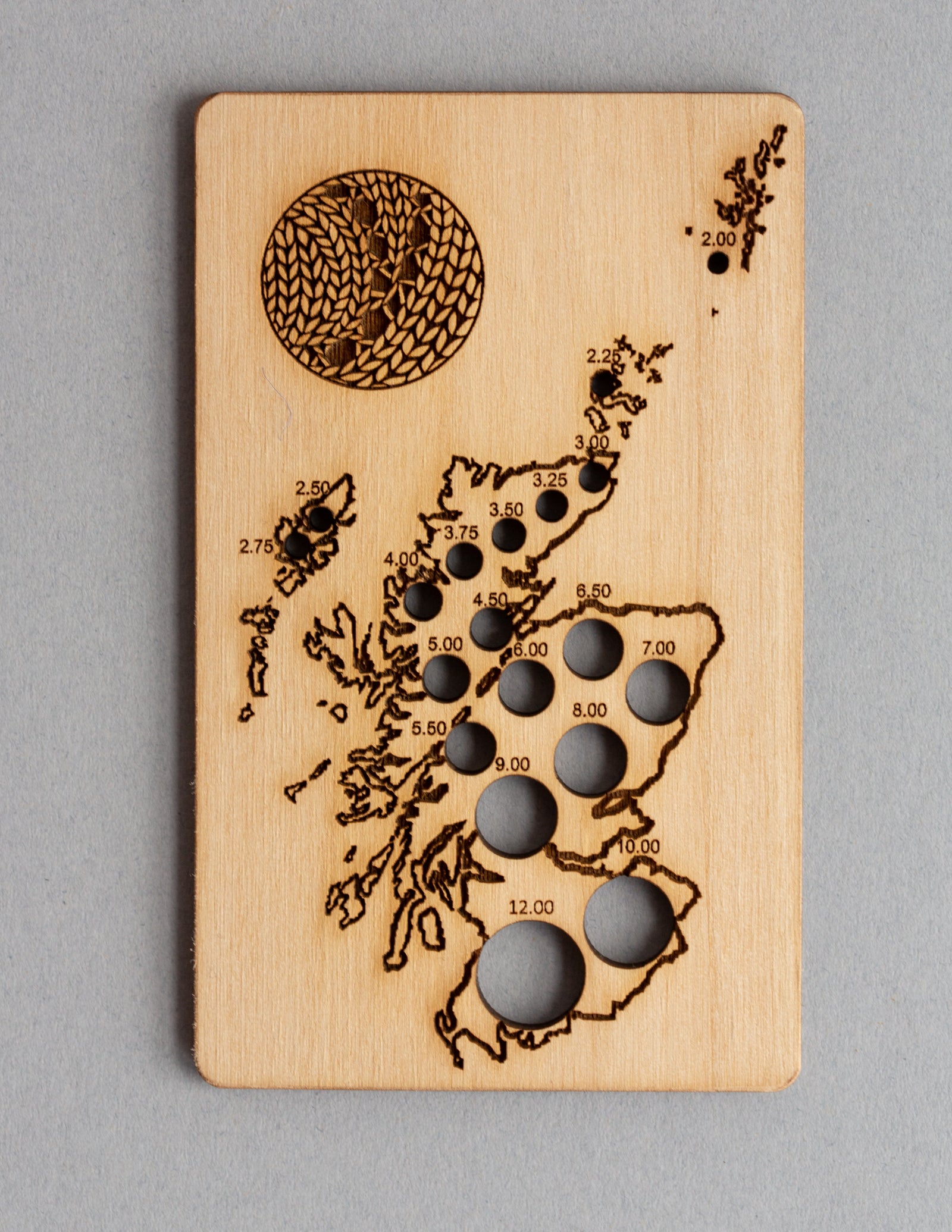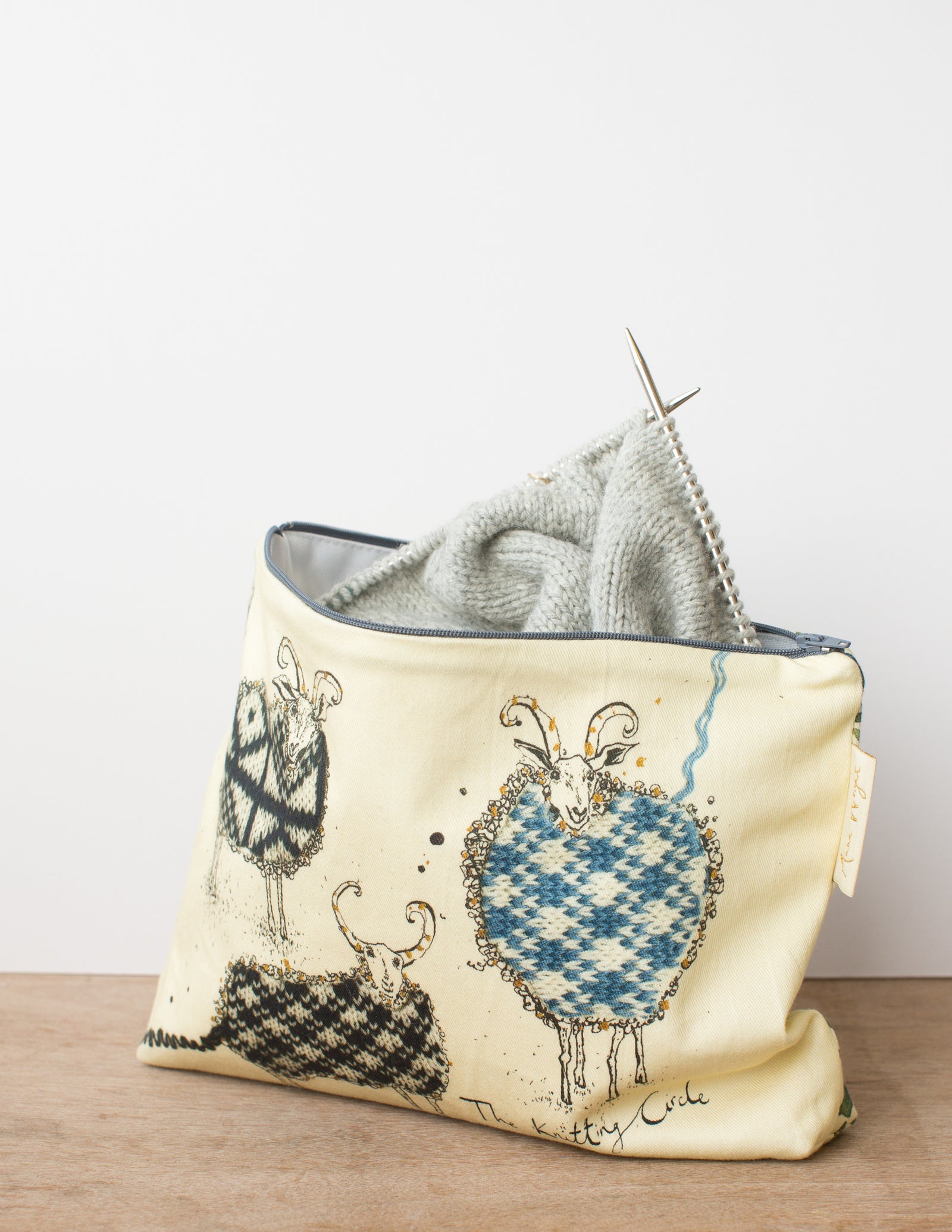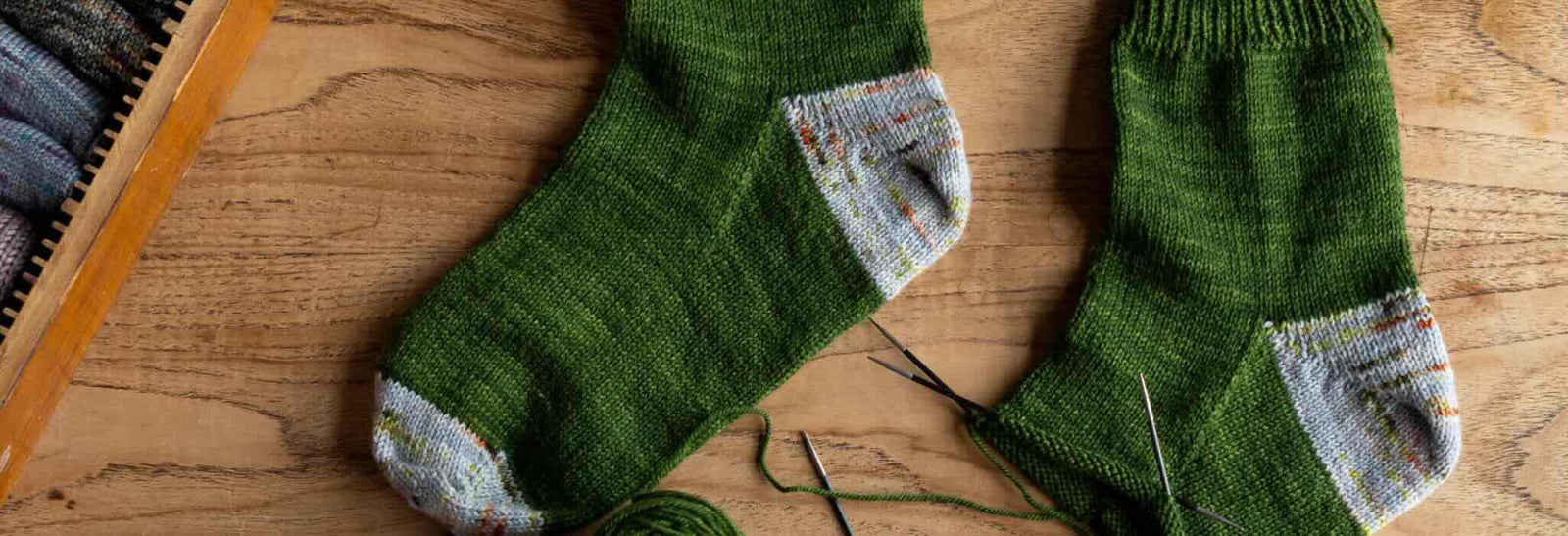Patterns
Kits
sundries
knitting tools, buttons and notions, project bags and other pleasing little things
knitting tools, buttons and notions, project bags and other pleasing little things

Exclusive Scotland needle gauge by Katrinkles

Zippered pouches in two sizes by our studio neighbour Anna Wright

keep small tools accessible with the Maker's Keep
gift 2019
Subscribe to our Colourwork Club for a gift that lasts well into the new year. Your recipient will receive a new colourwork kit in Janurary, February and March

Subscribe to our Colourwork Club for a gift that lasts well into the new year. Your recipient will receive a new colourwork kit in Janurary, February and March


Last minute shopping? Gift cards are delivered electronically - forward the email or print it for your recipient. A range of amounts are available and gift cards don't expire.


How To Darn with Arounna Khounnoraj of Bookhou
April 11, 2021
If you knit socks, then learning how to darn a sock is a vital skill! After all that hard work of hand knitting socks, knowing how to repair them and make them last longer is really worthwhile. Socks aren't the only knitted items to need a little fix-up, darning can be used to fix holes in sweaters too! Our free tutorial will teach you how to darn socks, sweaters, and any other knitwear that needs it.
But what is darning?
Darning is the simple process of weaving yarn in rows and columns to create a little patch of fabric to cover the hole or worn area.
We asked Arounna Khounnoraj of Bookhou to explain the process. Arounna is a fibre artist living in Toronto, and her studio focuses on screen printing in the making of a variety of goods including bags and home decor items using natural materials. She also works with her husband John Booth in designing and making wood furniture and accessories. She's also a darning expert, and recently published her new book Visible Mending.
This tutorial shows you how to create a weave mend using wool yarn and the Katrinkles Darning Loom.
Positioning the Loom

Let’s begin, when darning a hole in a garment it makes it easier to sew when you have a flat object underneath the hole. The wood base of the Katrinkles loom serves this purpose.

Take the wood base of the Katrinkles loom and place it centered under the hole that you want to mend, making sure to keep the flat edge of the loom at the top.


Take the heddle with its teeth pointing upright and press against the flat edge of the loom with the fabric sandwiched between.

Continuing to hold the heddle against the base, take the elastic provided and wrap around the perimeter so that it holds the fabric onto the base and the heddle to the flat side.

Once you put the elastic around the loom, adjust the heddle so that the teeth are just above the hole and protruding above the surface of the fabric.
Threading the Loom, Creating the warp

Take the tapestry needle provided and cut a piece of yarn the length of your arm from fingertips to your chin. Thread the needle so that one end is loose - you don’t need to tie a knot because the tails get woven into the back of mend.
Start at the bottom about ½ an inch below the hole, opposite the side with the heddle and to one side aligned with the first tooth on the heddle. Take the needle and go pick up some of the knitted area - about ⅛ of an inch.

Pulling the thread all the way through, leaving a tale about 3 inches long, start making the warp by taking the thread up and over the hole and wrap it around the first tooth on the heddle before coming back down over the hole and anchoring your needle into the knitted area.

Moving the needle to the side slightly, anchor the thread again, opposite the next tooth, and repeat step 8 until the area above the hole is covered with thread. Try to keep the threads evenly spaced and parallel to each other.
Creating the weft

Rethread your needle with a contrasting colour and start perpendicular to the threads you just finished to create the weft. To start, achore your needle into the knitted area just above where the warp threads start and about 1/8th of an inch to the side of the first warp thread.

As you reach the warp threads, slide your needle under and over each thread, repeating those steps untill you reach the other side of the mend where you will once again anchor the thread into the knitted area about 1/8th of an inch again. This will secure the mend along the edges and will not result in a gap.


Repeat step 11, moving back in the opposite direction but this time sliding the needle through the warp threads in an over and under, opposite to the previous thread. Anchor the threads into the knitted area on the sides and continue back and forth, under/over, then over/under untill the mend completely fills in over the hole.
Finishing

Once you complete your weave mend over the hole, remove the elastic band that is holding the heddle in place.

Carefully remove the heddle by lowering the teeth and releasing the top loops of your mend.

To tighten the top loops of warp thread, take the loose tail that is connected to the first loop and gently pull it down until the top loop disappears and the thread is tight. Move to the next thread, again gently pulling the thread tight and repeat until the entire mend is tight and there are no loose loops.

In order to finish the top edge, take your needle and thread and run a whip stitch along the edge to attach it to the knitted piece.

Flip over the knitted piece to reveal the back side of the mend and pull all your tails through from the front to back. Then take your needle and thread the tails using a running stitch to weave them into the knit. Any left over tails you can snip away.
Have you been inspired to give darning a go? Explore our range of darning products currently in stock in our online shop by visiting our mending collection.
Also in Journal

Deep Shadow Heel Tutorial
September 25, 2025

20 Years of Ysolda Knitting Patterns: Part 2
June 23, 2025

20 Years of Ysolda Knitting Patterns: Part 1
June 19, 2025
Recent Articles
-
Deep Shadow Heel Tutorial
September 25, 2025
-
20 Years of Ysolda Knitting Patterns: Part 2
June 23, 2025
-
20 Years of Ysolda Knitting Patterns: Part 1
June 19, 2025
-
Learn to Knit: Mattress Stitch
March 29, 2023
-
How to Knit a Scarf: A Beginners Guide to Scarf Knitting
March 23, 2023
-
Learn to knit: the long tail cast-on
February 03, 2022
-
How to Graft Your Knitting
December 09, 2021
-
Crochet Provisional Cast-on
December 02, 2021
-
Learn to knit: How to knit in the round with double pointed needles
November 25, 2021
-
Learn to knit: How to knit in the round using the magic loop technique
November 25, 2021
Free resources
-
KALS, step-by-step pattern guides and free patterns
Learn brioche with the free Daniel's Hat pattern
Tombreck - a free chevron beanie pattern
Working the brioche neck detail on the Polwarth sweater
Installing a zipper and ribbon, finishing wee Carson
Yarn colour ideas for Threipmuir sweater
Additional colourways for the Joy mitts (choose your pride flag)
How to join the shoulders on Wardie
How to join the pockets on Granton and Wardie
Finishing Resources for Granton
Broughton mittens tutorial part 1
Broughton mittens tutorial part 2
Broughton mittens tutorial part 3
Basics
Casting on
Decorative Channel Island Cast-on
Binding off
3 Easy Stretchy Bind-offs (p2tog bind-off; k2togtbl, k1 bind-off; Jeny's surprisingly stretchy bind-off)
Tubular Bind-off for brioche stitch
Increasing
Paired increase methods compared
How to continue in pattern while increasing and decreasing
Decreasing
Brioche stitch double decreases
Knitting in the round
How to Knit in the round using Magic Loop
How to Knit in the round using DPNs
Short rows
Swatching and gauge
Tips and tricks
Avoiding ears when binding off
Tighter purl stitches for neater cables and ribbing
Cabling without a cable needle
How to knit more symmetrical yarn overs
Bust darts in sweaters with all over stitch patterns
A magic formula for evenly distributing shaping
Superwash v Non-Superwash Wool
Picking up sts from the middle of the fabric
Reading knitting patterns
Understanding "continue in pattern"
Help! Where am I in my knitting project?
Using charts, even if you hate them
Finishing
Garment knitting
Joining the body and sleeves on a seamless bottom up sweater
Sizing
Ysolda’s sizing chart for knitwear designers
Inclusive garment knitting
How to pick a garment without a model for you (specifically addresses finding garment patterns when your gender identity isn't represented and the styles you want to knit might not be sized to fit your body)
How does ease affect inclusive size ranges?
Specific stitch patterns
Lace
Identifying and fixing mistakes in lace knitting
Colourwork
Getting started with stranded colourwork
Understanding colour dominance
Working stranded colourwork over small circumferences
Decreases in stranded colourwork
Holding the yarn for stranded colourwork
Ladderback Jacquard (a neat way to deal with long floats)
Cables
Cabling without a cable needle
Cabling without a cable needle on the wrong side
How to knit cabled decreases
Closed ring cable increases and decreasesBrioche
How to work brioche stitch in the round
Other crafts
Cross stitch
How to begin your first large cross stitch project
How to finish a cross stitch project with an embroidery hoop frame
Mending

Sign up today
Find out the latest news from the studio such as sales, pattern releases, and new workshops or KALs our learning community, The Knitwork. We also share helpful tips and exclusive subscriber discounts...



